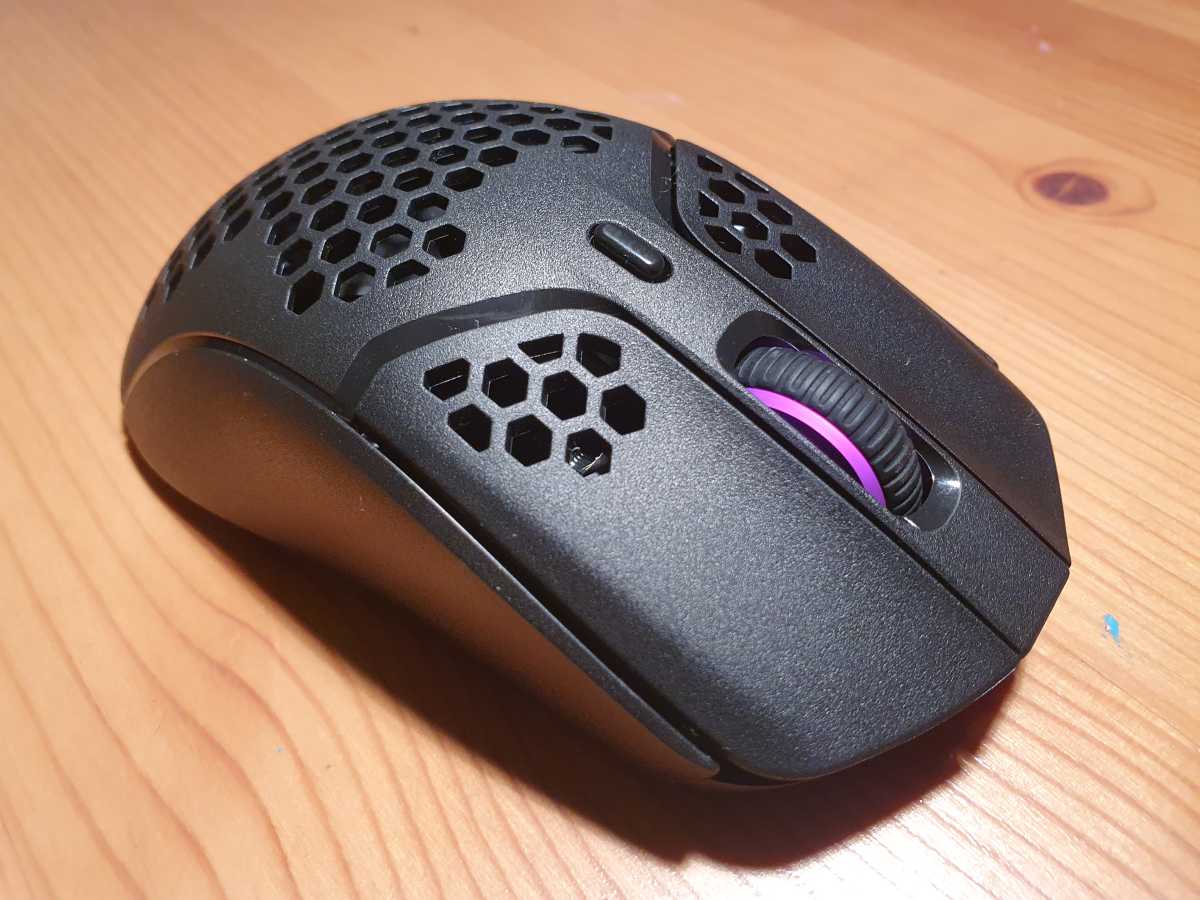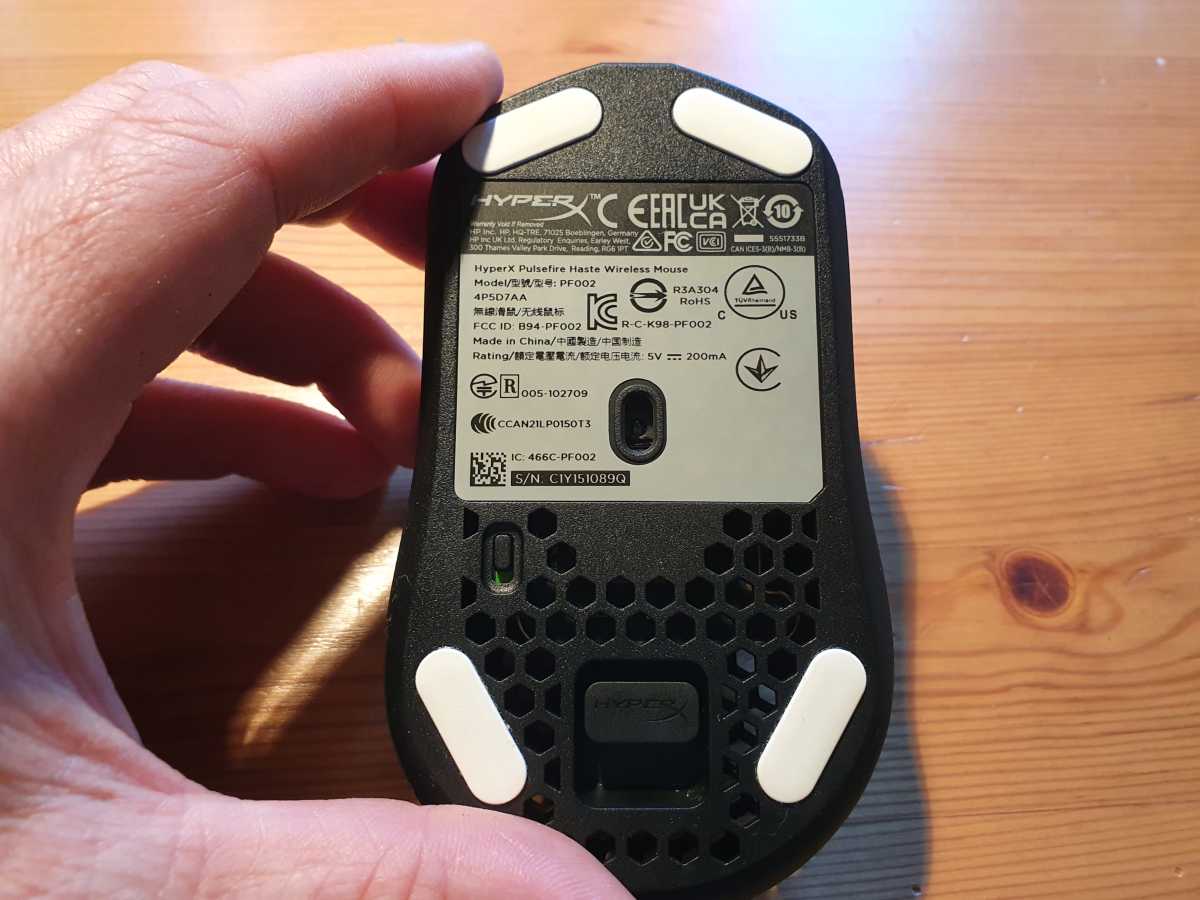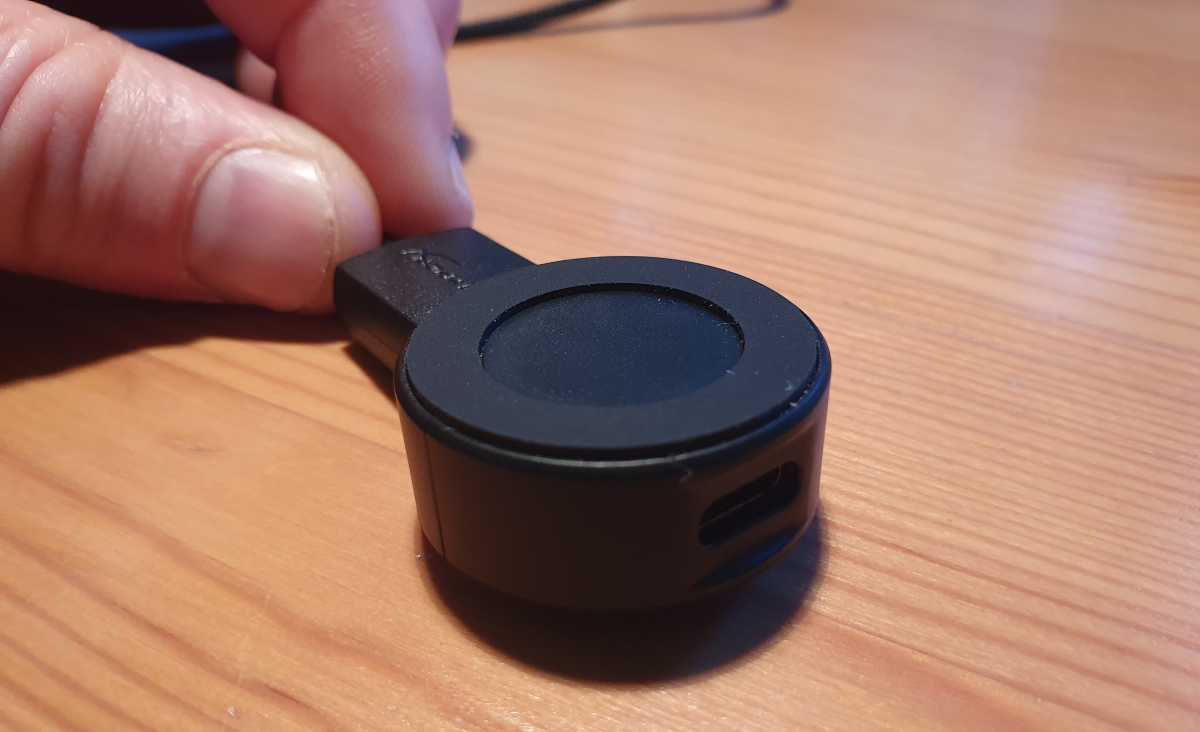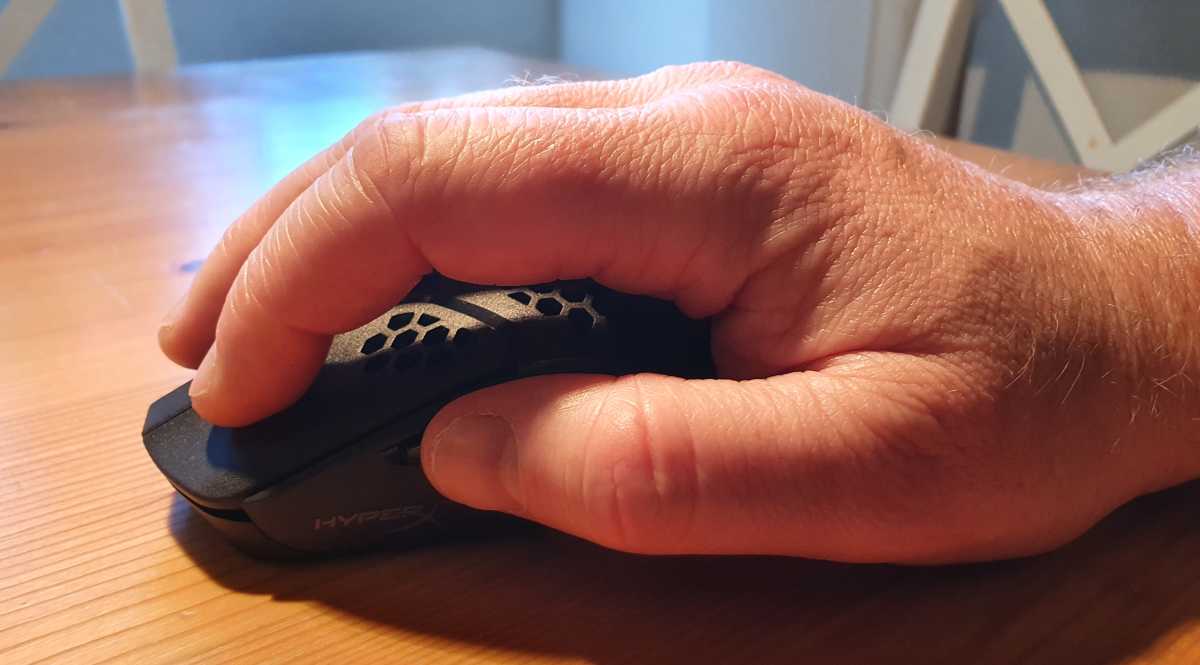HyperX Pulsefire Haste Wireless review: An esports-worthy wireless mouse
 [ad_1]
[ad_1]
 At a glance
At a glanceExpert’s Rating
Pros
- Weighs just 61 grams
- Has a highly accurate sensor
- Design is comfortable and aids performance
Cons
- Lacks Bluetooth
- Button configuration is dull
- Has only one RGB lighting zone
Our Verdict
The HyperX Pulsefire Haste Wireless is arguably the best wireless esports mouse currently available, being incredibly lightweight and featuring a precise 16,000 dpi sensor that takes no prisoners in high performance games.
Best Prices Today: HyperX Pulsefire Haste Wireless
The HyperX Pulsefire Haste Wireless is built on the back of its wired counterpart’s esports pedigree, sharing all the same features, including a low vertical profile that relaxes your grip through your wrist, making it easy to perform wide, sweeping movements without feeling cramped.
The mouse’s cleverly designed honeycomb chassis oozes style, putting it on trend with other top-notch gaming mice in 2022. It also comes with extra grips and slides so that you can personalize your setup exactly. Shipping for $59.99, the HyperX Pulsefire Haste Wireless costs $20 more than its wired cousin, but for gamers wanting a lightweight wireless esports mouse, it’s a solid performer that’s hard to beat.
This review is part of our best wireless gaming mice roundup. Go there to learn more about how we test wireless mice and to find reviews of other top contenders.
HyperX Pulsefire Wireless: Design and build
The wired version of the HyperX Pulsefire Haste made waves in the esports category last year, showing off a symmetrical design and a chassis that weighed just 59 grams. Thankfully, HyperX has made a wireless variant that does the original justice without compromising performance or ergonomics.
It features the same tit-for-tat list of premium features—a matte-black body, six-button configuration, and most importantly, the same trendy, honeycomb chassis we liked so much in the tethered variant. It’s also just as strong—showing no creaking, flex, or wobble in our testing and easily withstanding a battering in games.
Another thing we like about the Haste Wireless design is the extreme comfort it gives in long play sessions—its perforated surface allows plenty of air to circulate beneath your palm, making it the ideal go-to mouse during the hotter months. The Haste Wireless is also extremely lightweight—its 61 grams being barely noticeable in my hand. I had no trouble zipping it around my mouse mat, and it never tired out my hand or arm.

Dominic Bayley / IDG
Measuring just 4.9 x 2.6 x 1.5 inches, the HyperX Pulsefire Haste Wireless sports a compact shape that fits just about any sized hand, being neither too chunky nor too long. Its slim body nestled into my hand snuggly, so movements felt quite precise. The low profile was also easy on my wrist—I found that I clenched a lot less while aiming, which improved my comfort.
Size and weight aside, the Haste Wireless has a fairly boring button configuration: There’s just the standard two main buttons in front and two on the left-hand side controlled by your thumb. An RGB-lit mouse wheel adds a touch of flair in the front, while an obligatory DPI-preset button sits about an inch behind the mouse wheel.
Despite this rudimentary setup, the two main buttons are superbly defined, being well separated by grooves. They square up neatly inside the mouse’s frame to avoid vibrations. Consequently, they feel quick and clicky—ideal for FPS or RPG games where you need to respond quickly.
The buttons connect to TTC Golden Micro switches, which are rated for 60 million clicks. These are protected by an IP55-rated dust- and water-resistant coating, which is reassuring considering the many holes that could let in nasties.
Flipping the device over, you’ll find four virgin-grade PTFE glide skates—two at the back and two at the front. These slid smoothly over my mouse pad, but I did notice some friction when I used the mouse on my bare tabletop. I fixed this easily by adding two of the four additional glide skates that came supplied in the box.

HyperX Pulsefire Haste Wireless sports four PTFE glide skates on its underside and four extras come in the box.
Dominic Bayley / IDG
You also get optional button grips to give your fingertips and thumb extra traction. These are nice additions that really allow you to personalize your mouse grip to exactly match your playstyle.
HyperX Pulsefire Wireless: Gaming performance
The Pulsefire Haste Wireless connects to your PC via a 2.4GHz wireless connection, providing a decent 1,000Hz (1ms) polling rate, which is the minimum you’d expect in an esports gaming mouse these days. In my testing, the wireless signal was consistent even in fast-paced games like Counter-Strike: Global Offensive. There was also no perceptible lag—which I find essential in wireless gaming mice.
You can choose either to plug in your dongle directly to your PC or plug it into a supplied wireless adapter that you then place on your desk. Apart from ensuring your Wi-Fi signal has as little interference as possible, the convenient adapter prevents you from having to struggle with cords if your PC is in a hard-to-reach spot.

Wi-Fi adapter for the HyperX Pulsefire Haste Wireless gaming mouse.
Dominic Bayley / IDG
Sadly though, the Pulsefire Haste Wireless doesn’t come with Bluetooth functionality—a feature that can save your bacon if you misplace your dongle.
When it comes to the all-important sensor, the Haste Wireless packs a Pixart PAW3355 that tracks up to 16,000 dpi with an accuracy of 450 inches per second. Truth be told, it’s not the most powerful sensor in the esports category, and some gamers may wonder why HyperX didn’t add something beefier—like the PMW3370 sensor that tracks up to 19,000 dpi.
Yet, as far as our G3 Box News performance testing went, the PAW3355 proved perfectly capable in games. It felt highly accurate for crosshair aiming, especially in shooters with the lowest DPI preset switched on to ramp up precision.
Leaving nothing to chance, I pitted the HyperX Pulsefire Haste Wireless against a competitor mouse featuring a 20,000 dpi optical sensor to get a better idea of its performance. After four rounds of Overwatch on each mouse, my K:D ratios were virtually the same for each. Had I continued, it’s quite possible the Haste Wireless would have won out, since its exceptional lightness and handling made it feel a lot quicker in maneuvers that required me to swing to target foes.

Dominic Bayley / IDG
Another good reason for the Pixart 3355 sensor is that it helps give the Haste Wireless a longer battery life— it’s rated for 100 hours. The Pixart PAW3355 is a low-powered version of the PAW3388, and its low-power consumption seems like a good fit for a mouse you’re likely to take with you on the road.
Playing with HyperX’s Ngenuity software
HyperX’s Ngenuity app is where you can assign commands and macros to buttons, create and save profiles, and tinker with the mouse’s RBG lighting. It’s a fairly straightforward app, allowing you to change parameters with easy sliders, inputting commands or even by clicking on visual representations of the mouse itself.

HyperX’s Ngenuity software, where you can personalize your preferences.
Dominic Bayley / IDG
Here I easily changed parameters like the mouse’s polling rate and DPI settings, choosing between the supplied options, or in the case of DPI, adding my own settings. If you’re prone to lifting, you can even change the mouse’s lift-off distance, choosing between either low (1mm) or high (2mm)—which is a neat trick that can help keep you competitive.
There are six RGB lighting effects to choose from—including some really fun ones like a breathing effect that lets you fade in and out between colors. While this won’t make much visual difference in the Haste Wireless, it’s still a fun feature worth exploring.
Conclusion
The HyperX Pulsefire Haste Wireless is an excellent wireless version of the HyperX Pulsefire Haste, pulling out all the stops when it comes to performance, comfort, and style. At 61 grams it’s also one of the lightest wireless gaming mice we’ve tested to date.
[ad_2] https://g3box.org/news/tech/hyperx-pulsefire-haste-wireless-review-an-esports-worthy-wireless-mouse/?feed_id=1425&_unique_id=62c2f578d47ce


0 comments:
Post a Comment